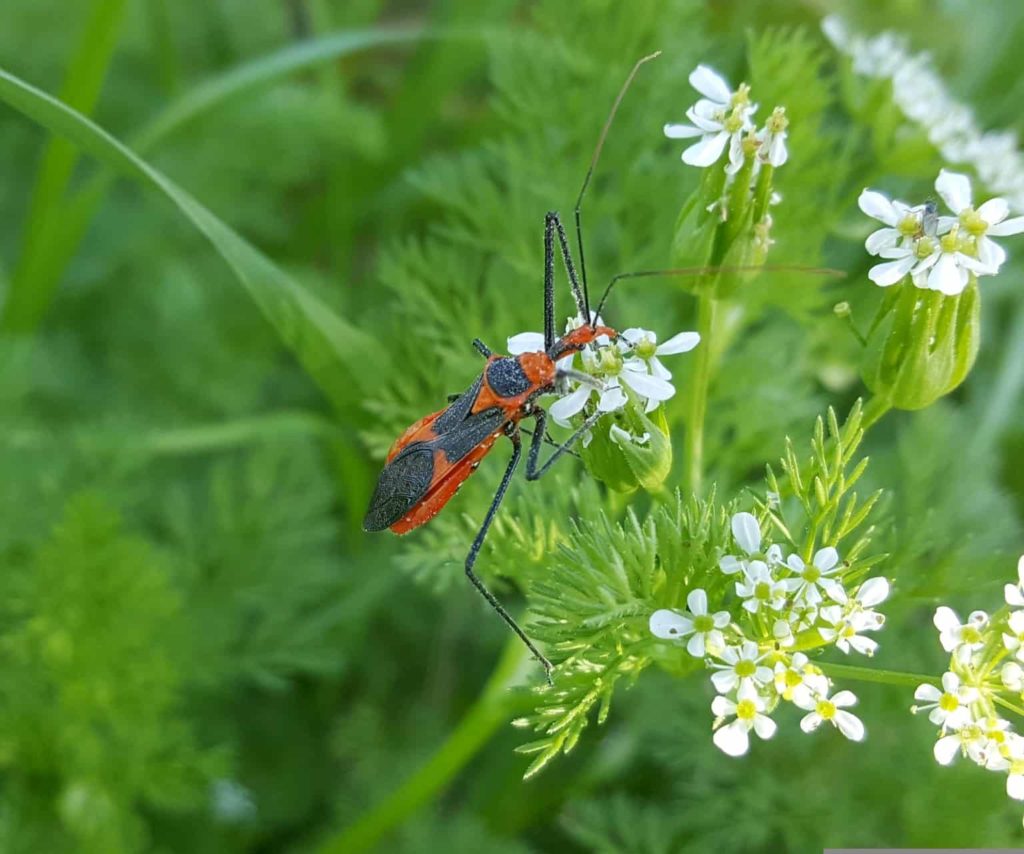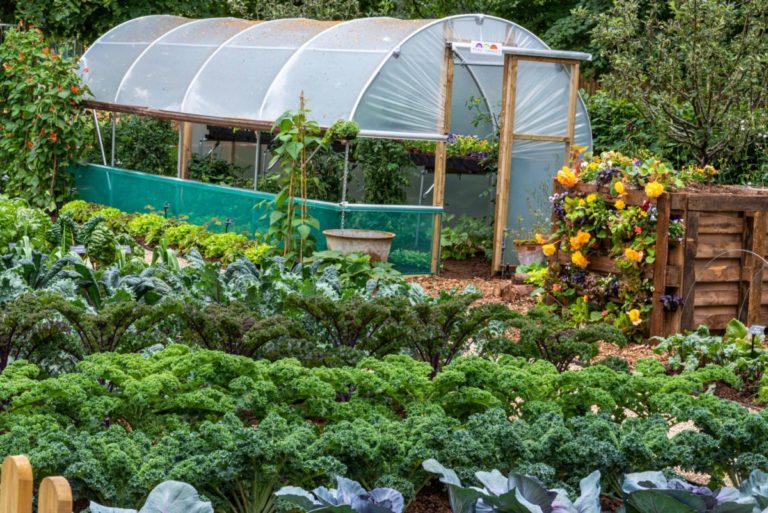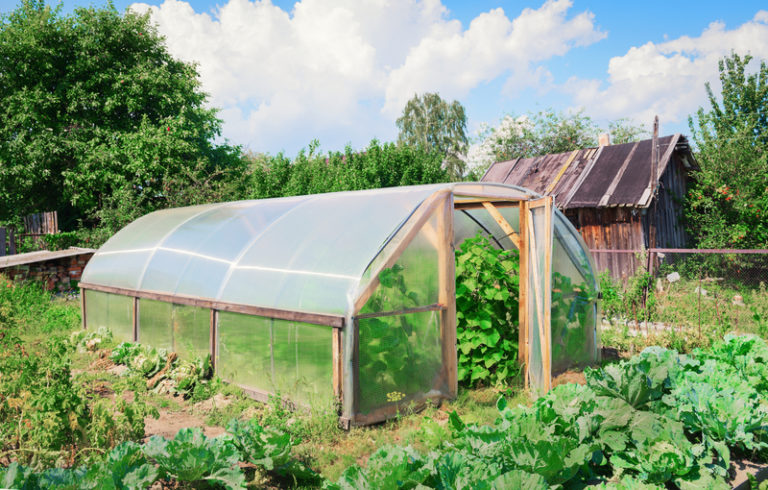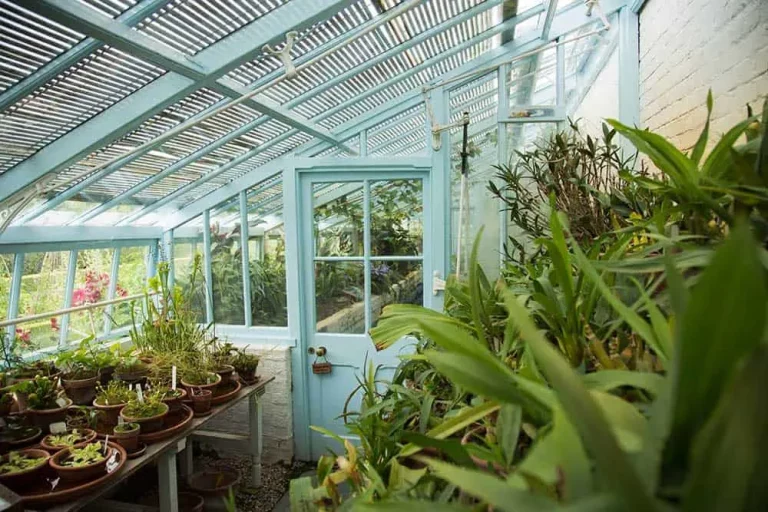Growing an off-grid garden can be a rewarding experience, but it also comes with its fair share of challenges.
One of the most common issues that off-grid gardeners face is pest infestation.
From hungry insects to destructive rodents, these unwanted visitors can quickly devour your crops and leave you with a barren plot of land.
However, by learning how to identify and eliminate common pests in your off-grid garden, you can protect your plants and ensure a bountiful harvest.
We will explore the most common pests that affect off-grid gardens, as well as effective methods for eliminating them without resorting to harmful chemicals or excessive water usage.
With these techniques, you’ll be able to keep your garden healthy and thriving while also maintaining a sustainable and eco-friendly approach.
Know your enemies
Start by learning about the most common pests that can affect your garden, such as aphids, whiteflies, spider mites, and caterpillars. This will help you identify the problem and choose the right solution.
Start by familiarizing yourself with the most common pests that can affect your garden, such as aphids, whiteflies, spider mites, and caterpillars.
These pests can cause significant damage to your plants, ranging from stunted growth to complete destruction.
By identifying the problem and understanding the life cycle of these pests, you can choose the right solution to effectively manage the infestation.
For instance, if you notice aphids on your plants, you can use natural pest control methods like introducing beneficial insects like lady beetles or lacewings, which prey on aphids.
Alternatively, if you notice caterpillars eating holes in your leaves, you can use chemical pesticides or introduce parasitic wasps that prey on caterpillars.
By arming yourself with knowledge of the most common garden pests, you can take proactive steps to protect your garden and ensure a healthy harvest.
Monitor your plants regularly
Check your plants daily for any signs of pests, such as holes in leaves, strange-looking eggs, or actual pests crawling on the plant.
Monitoring your plants regularly is a important step in maintaining their health and preventing pest infestations.
Every day, take a few minutes to inspect your plants for any signs of pests, such as holes in leaves, strange-looking eggs, or actual pests crawling on the plant.
Look for any irregularities in the shape or color of the leaves, as these can be early indicators of pest infestations.
Check the undersides of the leaves and the stems for signs of pests, as these are common places for pests to hide.
Use a magnifying glass to get a closer look at any suspicious areas.
Early detection is key to preventing pest infestations from getting out of hand, so make sure to inspect your plants daily.
By regularly monitoring your plants, you can catch any potential problems before they escalate and take appropriate action to protect your plants’ health.
Use natural deterrents
Many common pests can be deterred with natural solutions, such as neem oil, garlic spray, or introducing beneficial insects like ladybugs or lacewings.
Using natural deterrents can be a highly effective and sustainable way to keep your garden pest-free.
Neem oil, for example, is a powerful natural pesticide that can be used to repel a wide range of pests, including aphids, whiteflies, and spider mites.
To use neem oil, simply mix it with water and spray it on your plants.
Garlic spray is another popular natural deterrent that can help keep pests at bay.
To make garlic spray, simply blend garlic cloves with water and let it sit for a few hours before spraying it on your plants.
Another option is to introduce beneficial insects like ladybugs or lacewings to your garden.
These insects will help control pest populations naturally and can be a more effective and sustainable solution than using chemical pesticides.
For example, ladybugs feed on aphids and can help reduce their populations.
Lacewings, on the other hand, feed on mites and aphids.
By incorporating these natural deterrents into your pest management strategy, you can create a healthier and more sustainable garden ecosystem.
Practice good garden hygiene
Keep your garden clean and tidy, remove weeds, and dispose of any debris or rotting plant material that could attract pests.
Maintaining good garden hygiene is essential to keeping your garden healthy and pest-free.
One of the most important aspects of garden hygiene is keeping your garden clean and tidy.
This means regularly removing any debris or rotting plant material that could attract pests and spread disease.
Weeds can also harbor pests and diseases, so it’s important to remove them as soon as they appear.
Regularly disposing of any debris or rotting plant material can also help prevent the buildup of pests and diseases in your garden.
It’s a good idea to regularly inspect your plants for any signs of disease or infestation, and to take action immediately if you notice any issues.
Use physical barriers
Row covers or fine-mesh screens can prevent pests from reaching your plants.
Using physical barriers such as row covers or fine-mesh screens is an effective way to prevent pests from reaching your plants.
These lightweight, breathable fabrics can be placed over individual plants or entire beds to protect against insects and other pests.
Row covers, which are typically made of lightweight nylon or mesh material, can be draped over plants like a blanket, while fine-mesh screens can be stretched over a frame to create a physical barrier.
These barriers prevent pests from landing on or crawling onto your plants, helping to reduce the risk of infestation and damage.
Many row covers and fine-mesh screens are designed to allow for air, light, and water to reach your plants, so you don’t have to worry about compromising their health.
By using physical barriers, you can effectively protect your plants from pests and other threats, without resorting to harmful chemicals or toxic substances.
Choose pest-resistant plants
Some plants are naturally more resistant to pests, such as tomatoes, peppers, and marigolds. Consider these options when planning your garden.
When it comes to creating a thriving and healthy garden, choosing the right plants is important.
To avoid the hassle and expense of dealing with pests, consider selecting plants that are naturally resistant to pests.
Tomatoes, peppers, and marigolds are excellent options to consider.
These plants have evolved to develop defenses against pests, making them more resilient and less reliant on chemical pesticides.
Tomatoes, for instance, have a built-in defense system that repels nematodes and other pests.
Their thick skin and juicy flesh make it difficult for pests to penetrate and feed on the plant.
Similarly, peppers have a natural resistance to pests due to their wrinkled skin and spicy flavor, which deters most pests.
Marigolds, on the other hand, have a strong scent that repels nematodes and other pests, making them a great addition to any garden.
Incorporating pest-resistant plants into your garden design is a smart and proactive way to avoid pest problems.
By choosing these plants, you’ll not only reduce the need for chemical pesticides but also create a more balanced and sustainable ecosystem in your garden.
With their natural defenses, pest-resistant plants like tomatoes, peppers, and marigolds can thrive and provide you with a bountiful harvest without the need for pesticides.
So, make the switch to pest-resistant plants today and reap the rewards of a healthier, more sustainable garden.
Use biological controls
Encourage beneficial insects like ladybugs, lacewings, and praying mantis to help control pest populations. These beneficial insects can be purchased at gardening stores or online.
One of the most effective and environmentally friendly ways to control pests in your garden is to use biological controls.
These beneficial insects, such as ladybugs, lacewings, and praying mantis, are natural predators of common garden pests like aphids, whiteflies, and spider mites.
By encouraging these beneficial insects in your garden, you can help keep pest populations under control without resorting to chemical pesticides.
You can purchase these beneficial insects at gardening stores or online, and they can be released in your garden to start controlling pests immediately.
For example, ladybugs are known to feed on aphids, while lacewings feed on whiteflies and spider mites.
Praying mantis, on the other hand, feed on a wide range of garden pests, including caterpillars, beetles, and even small snails and slugs.
It’s important to note that biological controls are most effective when used in combination with other integrated pest management (IPM) strategies, such as removing weeds and debris, providing adequate irrigation and fertilization, and using physical barriers to keep pests out of your garden.
It’s important to choose the right beneficial insects for your specific pest problem, as different insects are effective against different pests.
By incorporating biological controls into your IPM plan, you can create a healthy and balanced garden ecosystem that is resistant to pests and diseases.
Use integrated pest management
This approach involves using a combination of natural and chemical controls to keep pest populations under control. For example, you might use neem oil to control aphids, and then follow up with a spinosad-based product to control caterpillars. This approach helps to minimize the use of harsh chemicals and protect beneficial insects.
By adopting an integrated pest management approach, gardeners can effectively manage pest populations while minimizing the use of harsh chemicals and protecting beneficial insects.
IPM involves using a combination of natural and chemical controls, tailored to the specific pest problems in your garden.
For instance, you might start by using neem oil to control aphids, which is a safe and non-toxic option that can be applied directly to the affected plants.
Neem oil works by repelling and killing aphids, and it also has other beneficial properties that enhance plant growth.
After controlling the aphid population with neem oil, you could then follow up with a spinosad-based product to target caterpillars, which are a common pest in many gardens.
Spinosad is a natural insecticide that is derived from a soil bacterium, and it is highly effective at controlling caterpillars without harming beneficial insects like bees and butterflies.
Using IPM techniques can help gardeners maintain a healthy and balanced ecosystem, while also protecting the environment and human health.
By choosing the right combination of natural and chemical controls, gardeners can keep pest populations under control without resorting to broad-spectrum pesticides that can harm beneficial insects and the environment.
In addition, IPM techniques can help gardeners identify and address the underlying causes of pest problems, such as poor soil quality, drought, or poor plant selection.
By addressing these underlying causes, gardeners can create a more resilient and sustainable garden ecosystem.
Want More? Dive Deeper Here!
Hey there! If you’re the type who loves going down the rabbit hole of information (like we do), you’re in the right spot. We’ve pulled together some cool reads and resources that dive a bit deeper into the stuff we chat about on our site. Whether you’re just killing time or super into the topic, these picks might just be what you’re looking for. Happy reading!
- Pest Management for Herb Bedding Plants Grown in the Greenhouse | Integrated Pest Management
- Insect Pest Identification and Control | Penn State Extension
- IPM in the Greenhouse Series: Integrated Pest Management in Commercial Greenhouses: An Overview of Principles and Practices | Oklahoma State University
- SP486A/IN1073: Urban Pests and Pest Management






